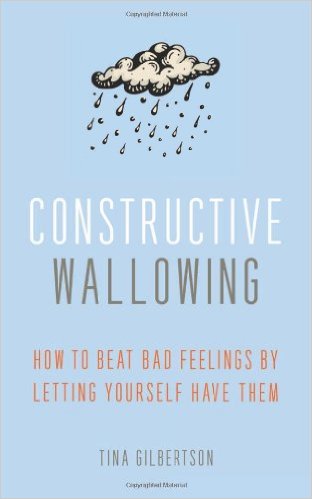by Shoshana Shea
Have you ever fallen down the rabbit hole of negative self-talk and found yourself thinking…
· “I’m unworthy”
· “I’m not good enough”
· “I hate myself”
· “There’s something wrong with me”
If you said yes to any of these, you are not alone.
Where does this come from?
These negative thoughts emerge when we are in pain. We want to unfeel our feelings, but we can’t. We want the pain to end. This is where the self-critic comes in and wants to make sense of our pain so it can stop. When it can’t find an easy fix, it starts saying things like “There must be something wrong with me.” “I hate myself for caring and my (perceived) shortcomings.” “I’m unworthy.” “I’m unlovable.” “I’m not enough.”
If we have enough hard painful events in our lives, which most of us do, we start to have narratives (aka storylines) about who we are and how things are going to go (not well!) in any situation; we stop checking scenarios out for what they are. Sometimes we even deny that we have emotions at all. An example of this would be if you went out on a date, had a great time, felt like you connected with the other person, and then you never heard a word from your date again. You might think that you are unlovable, hate yourself, and decide that dating isn’t for you. This is not true. Yes, you are having a painful present moment, but your interpretation and the assumptions you make may not be true. In other words, thinking you are unlovable does not equate to actually being unlovable.
Cognitive Fusion: Believing our thoughts, acting on them, and getting stuck in the rabbit hole
In Acceptance and Commitment Therapy (ACT), this is called Cognitive Fusion, which means that we take our thoughts as absolute truths. When we experience cognitive fusion, we feel we have to carry out our thoughts’ directives without question, even if they tell us to make ourselves small or that we are small. When we are completely ‘fused’ i.e., attached, to our thoughts, we get pulled down the rabbit hole.
Cognitive De-Fusion: Unhitching from our thoughts
So if cognitive fusion means unquestioningly believing our thoughts to be absolute truths, cognitive de-fusion means that we are able to notice our thoughts without automatically acting on them. This is where mindfulness comes in. Viktor Frankl has been attributed to have said, “Between stimulus and the response there is a space. In that space is our power to choose a response. In our response lies our growth and our freedom.” When we can de-fuse, or get some space from our thoughts, we are able to see them and understand them better, even though we often might not really want to see the hard stuff in front of us.
Here are some techniques to consider for getting distance from the self-critic:
1. Give yourself the benefit of the doubt that you are feeling the way you do for good reason. There is ALWAYS a reason why you are feeling the way you do, but it is not because you are worthy of hating yourself! Take the example up above. The reason you might be feeling you hate yourself is because there was a painful present moment that you couldn’t control. You actually have no idea why your date never called back. Perhaps they were already dating someone else. Perhaps they were not in a place to move forward in a serious way in a relationship. You can’t know for sure what the reason is, and your feelings of pain are valid, but they are not an indication that they exist because something is wrong with you.
2. Name the emotion. Once you have given yourself the benefit of the doubt that you are feeling something for good reason, ask yourself what those feelings might be. Emotions are usually one word: Sad, fearful, anxious, hurt, etc. Emotions give us important information.
3. “Am I worthy?” is not necessarily the most helpful question to ask yourself. Instead, ask yourself, “What is the Painful Present Moment?” (Which I call The PPM). Continuing with the above example, you might be dating because you would like to find a life partner. In this scenario, the PPM is that since your date did not call back, you have not yet found your partner. That, in and of itself, does not feel good and could be quite disheartening. The self-critic may say, “It’s because you are not enough.” The mind is coming up with explanations because you are in pain and it is hard to sit with that. It’s hard to accept that you probably need to keep dating, when it clearly has not been a great experience thus far.
4. Anxiety and sadness are not bad in and of themselves. They are there for good reason (See point #1); it’s UNACKNOWLEDGED anxiety and/or sadness that leads to the problems. For example, walking home at night in a not so safe neighborhood, you have two choices: you have a well-lit street that takes longer, or a short-cut through a dark alley. Which one gives you anxiety? It serves a good purpose in our lives if we examine the cause of that anxiety. So the next time you are feeling anxious, give yourself the benefit of the doubt and try find out why.
5. Have Self-Compassion. If you can’t quite access why the negative self-talk is raining down on you so hard, try to have compassion for yourself. In other words, at least try to make the effort to understand yourself, even if you still feel like the emotions are just there for no apparent cause. Practice statements like, “I get why I’m feeling anxious because...” or “I’m probably feeling this way for good reason, even if I don’t know what that exact reason is right now.” My favorites are, “This stinks” and “No wonder I’m feeling this way.”
6. Practice saying, “My mind is having the thought that (insert self-critical statement)...” For example, “...that I’m overthinking this” or “…that I shouldn’t be taking this so hard.” This helps you to separate your mind from your self, and can help create some space that can allow you to recognize that your thoughts are not necessarily cold hard truths.
7. Try slowing the pace of your words, adjust your intonation, and use a kinder tone of voice. “(Oh no!) I'm anxious!” vs. “I AM anxious, and I don't have to pretend I'm not. It's actually my body telling me that something needs my attention.” This helps with cognitive flexibility and organically shifts your perspective. The function of the mind/self-critic is to alert you that something VALID needs your attention.
8. Talk to a trusted other. If my mind is working overtime to either spin and/or criticize me, I know that important truths are begging to be uncovered and unpacked beneath the storylines my mind is trying to tell. And if I can’t uncover it on my own, I ask a trusted other to help me to create space between myself and my thoughts so I can get that shift in perspective I so desperately need. You may think you have talked and thought about this enough already, so last thing you want to do is talk about it more. Consider this idea: yes, you have been thinking a lot, but you are likely stuck in the rabbit hole, especially if there is little to no relief and the end to your suffering is nowhere in sight. Talking to someone else can allow you to formulate more helpful questions so that you can move forward in a meaningful way.































